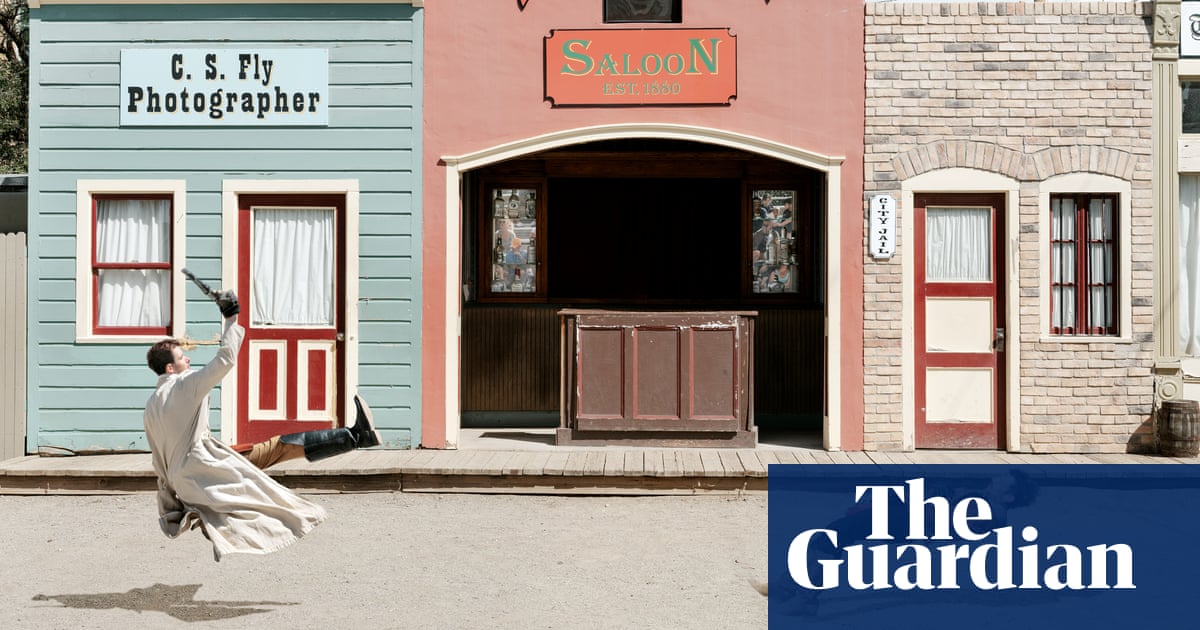
Tombstone was a gold rush boom town in Arizona, famous today for a little piece of American history that happened there: a gunfight between lawmaker Wyatt Earp and outlaws that has since been represented in films, on TV and in a theatre performance that takes place twice a day every day in Tombstone itself. The show is the story of an all-American hero loved by the US audience – but of course it’s a fake story. Earp wasn’t a golden superhero and, like so many famous historical figures, the events surrounding him and the gunfight are unfocused and blurred. For me, this is a metaphor for how US culture rewrites its history in a way that has little to do with the facts.
My girlfriend – also a photographer – and I went to the theatre show in Tombstone for three days in a row. There are two performances a day, one early in the morning and one at noon. On the first day we booked both, so as to check which was better in terms of the light. The noon one was best – the sun was high and the shadows fell right beneath the bodies.
I went to the show for three days in a row, sat at the front and just kept on taking the same picture
The next day we came back with our cameras: two Fuji GFXs. It’s one of the most powerful digital cameras. We sat in the front of the theatre, without tripods or lights, and just took the same photographs for two days in a row. I wanted to show both shooters getting hit at the same moment, capturing the figures suspended in the air as they are falling. There’s no heel or elbow or head touching the ground in this picture. In most of the photographs in West, the series this is from, what you see is what we shot – but not in this case. We didn’t manage to capture both shooters suspended in the air at the same time – so we moved one of them into the other in post-production.
The photograph is typical of my visual language: it’s overexposed, two-dimensional, frontal – the viewer is right in front of the scene. Everything is clean and clear, but the message is still confused. I always try to do this with my work: to make my photographs clear, physically, but they are never a complete story. I am always trying to make the spectator ask: “What am I looking at? Should I trust photography? Should I trust the artist?” I’m happy when someone looks at my work and gets suspicious.
I wanted to combine the feel of a snapshot with the sense of something eternal. The blur between real and fake is very important to me. The main questions in this work were “Is history real?”, and “How does what is staged become real in American history?”
The West project technically began in 2014 and ended in 2022. But conceptually it started in 2008, with the financial crisis and the collapse of Lehman Brothers. I wanted to do something about western culture, and was wondering what time and place could describe what I wanted to say about capitalism, liberalism and post-Fordism. The gold rush, beginning in California in 1848, was a good starting point. It was a moment when people from every place in the world rushed to one specific point with the aim of becoming rich very fast without any particular skill. It was the start of liberalism, which evolved into what happened in 2008 and the global financial crisis.
All of the West project was staged. When I’m at home in Milan, I study Google Earth and decide where I want to place my tripod, what kind of lens I want to use. On the one hand everything is real, because I don’t build or construct anything; but on the other, it is also fake. I usually print my images on cotton paper, because I want to find a sort of blurred area between photography and painting. I try to understand the role of photography in relation to art, especially in my country, and its relation to geopolitical issues. That’s what my art is ultimately about: how can photography engage with geopolitical issues?
Today, photography has lost its sacred aura. We take pictures with mobile phones, we don’t print them, we put them in clouds, and everyone is a photographer. So we have no photographs, no cameras and no photographers.
Francesco Jodice’s CV
Born: Napoli, Italy, 1967
Trained: “Graduated as an architect. I never studied art or photography, but my family’s house was full of books, all kinds of books.”
Influences: “Stan Lee & Jack Kirby, Raymond Chandler, Michael Mann, Paul Virilio, Caravaggio, Hideo Kojima.”
High point: “A few years back in Rotterdam, after a lecture, a young man approached and told me, ‘please stay hungry.’”
Low point: “I never succeeded in making a long feature movie and I will never travel the universe (very probably).”
Top tip: “Travel the universe.”












